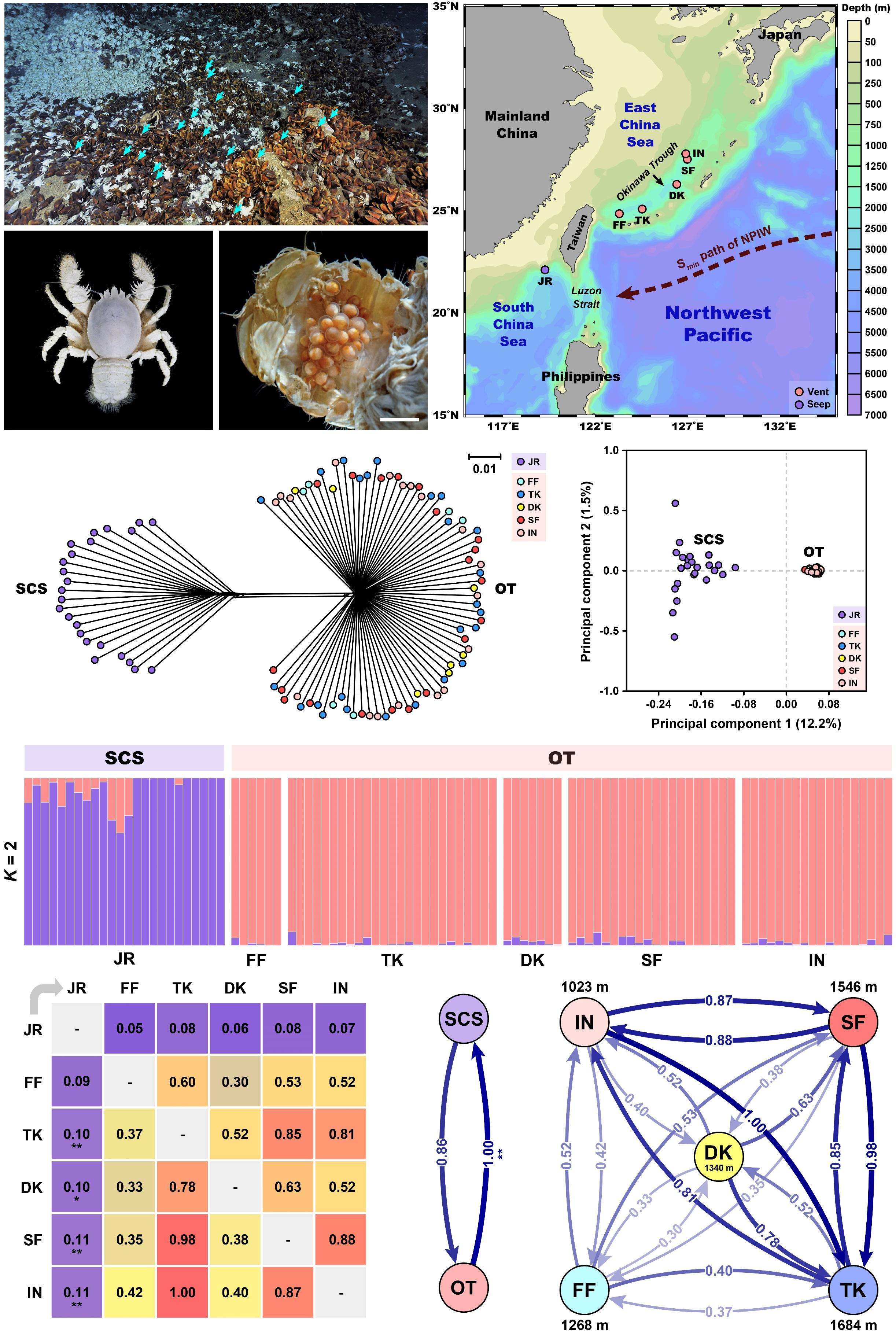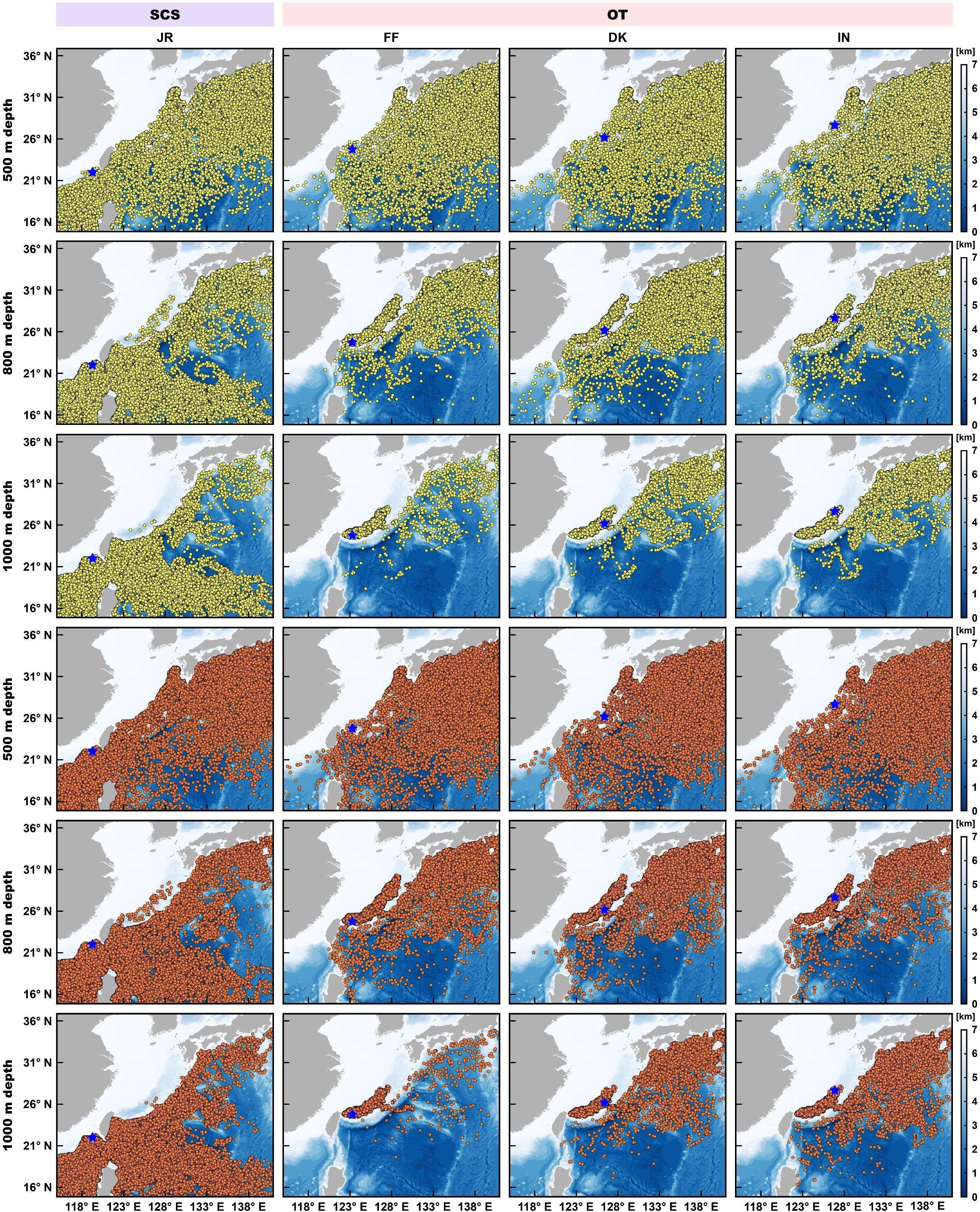Driven by chemosynthetic primary production, hydrothermal vent and hydrocarbon seep ecosystems not only contribute to biodiversity in the deep ocean and play crucial roles in global biogeochemical cycling, but also harbor a wealth of natural resources, including gas hydrate, rare metals, and seafloor massive sulfides. With more than 90 vents and 70 seeps discovered, and at least 20% of macrobenthic species shared between these two types of habitats, the Northwest Pacific has been acknowledged as an evolutionary hotspot for deep-sea organisms. However, over the past decades, due to the rapid progress of marine technologies and the escalating energy demand, the vent and seep ecosystems in the Northwest Pacific have also emerged as targets for resource exploitation. For instance, scientific drilling of gas hydrates has been initiated in the South China Sea seeps since 2007, test mining of seafloor massive sulfides has been attempted in the Okinawa Trough vents since 2017, and the same holds for cobalt-rich crusts in the Takuyo-Daigo Seamount since 2020. These human activities can severely impact vent and seep ecosystems, including alterations in ecological functions and the loss of biodiversity at the genetic, species, and ecosystem levels. Under these circumstances, there is an increasing need to study the population connectivity of vent- and/or seep-dwelling species, especially their genetic divergence and migration patterns. Such knowledge will illuminate the biogeographical subdivisions and source-sink dynamics of endemic species, and offer scientific guidelines for the management of deep-sea biodiversity in the face of both local human disturbances and global climate change. Nevertheless, systematic investigations on this topic remain scarce, which impedes the sustainable development of deep-sea resources and the evidence-based conservation of deep-sea ecosystems to a large extent.
To bridge this knowledge gap, we conducted a population connectivity study on the galatheoid squat lobster Shinkaia crosnieri – a deep-sea foundation species widely distributed in vent and seep ecosystems in the Northwest Pacific. Through the application of an interdisciplinary methodology integrating population genomics and oceanographic approaches, we discovered two semi-isolated lineages of S. crosnieri with limited and asymmetrical gene flow that might have been shaped by the geographic settings, habitat types, and ocean currents. One lineage consists of vent populations in the Okinawa Trough, with those inhabiting the southern trough area likely serving as the source; the other is the Jiaolong seep population in the South China Sea, which might have recently undergone a pronounced demographic contraction and displays genetic introgression from the Okinawa Trough lineage potentially mediated by the intrusion of the North Pacific Intermediate Water. Subsequently, we compared the biogeographic patterns of S. crosnieri with those of two other representative and co-occurring vent- and seep-endemic species that were published previously. Based on their biogeographical subdivisions and source-sink dynamics, we identified that the southern Okinawa Trough vents and the Jiaolong seep warrant imperative conservation efforts to sustain the deep-sea biodiversity in the Northwest Pacific.
Overall, our study represents one of the few large-scale empirical efforts to demonstrate how population genomics can be integrated with oceanographic approaches to understand the genetic divergence and migration patterns of deep-sea macrobenthos inhabiting island-like vent and seep ecosystems. Our results will guide future decision-making regarding the effective designation of deep-sea reserves and the evidence-based development of marine management plans in the Anthropocene. Furthermore, these outputs will support the achievement of the United Nations Sustainable Development Goals, particularly “Goal 14: Conserve and sustainably use the oceans, seas, and marine resources”, as well as the objectives of the United Nations Decade of Ocean Science for Sustainable Development (2021–2030).
Our study was supported by the Major of Basic and Applied Basic Research Project of Guangdong Province (2019B030302004), the PI Project of Southern Marine Science and Engineering Guangdong Laboratory (Guangzhou) (2021HJ01, HJRC2022001, and SMSEGL24SC01), the General Research Funds (GRFs) of HKSAR government (16101822, 12101021, and 12302927), the Collaborative Research Fund (CRF) of HKSAR government (C2013-22G), the Fundamental Research Fund for the Central Universities (202172002), and the Japan Society for the Promotion of Science (JSPS) Grant-in-Aid for Scientific Research (18K06401). The relevant scientific findings have been published in the high-impact journal Molecular Ecology.

Figure 1. Population differentiation, genetic structure, and “source-sink” dynamics of the deep-sea galatheoid squat lobster Shinkaia crosnieri were revealed by analyzing 12,977 genome-wide single nucleotide polymorphism (SNP) markers obtained via the genotyping-by-sequencing technique. Our results demonstrate the existence of two semi-isolated lineages of S. crosnieri with limited and asymmetrical gene flow. One lineage consists of vent populations in the Okinawa Trough (OT), with those inhabiting the southern trough area likely serving as the source. The other lineage encompasses the Jiaolong (JR) seep population in the South China Sea (SCS), which exhibits genetic introgression from the Okinawa Trough lineage.

Figure 2. Distribution patterns of the released numerical particles in the study region indicate that the intrusion of the North Pacific Intermediate Water (at depths of 500 m and 800 m) might have mediated the gene flow of the deep-sea galatheoid squat lobster Shinkaia crosnieri from its Okinawa Trough (OT) vent lineage to the South China Sea (SCS) seep lineage, as illustrated in Figure 1.
Attachment download:
